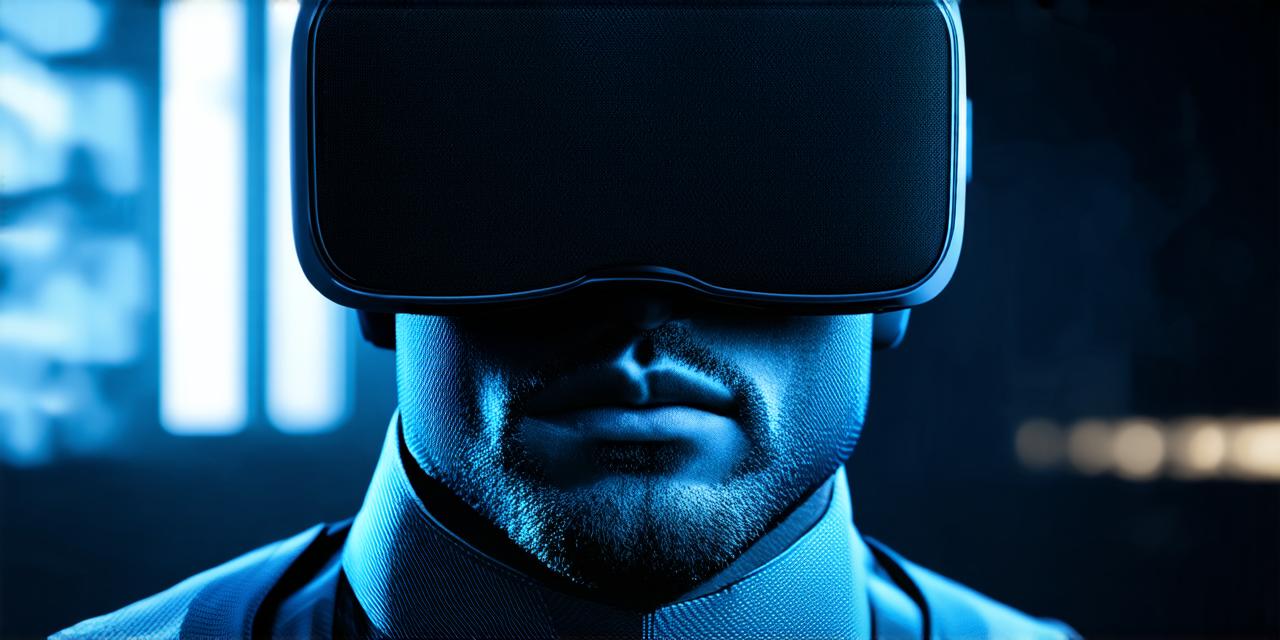
How do virtual reality headsets work?

Virtual reality (VR) technology has come a long way since its inception, with high-quality headsets now available to consumers. These devices allow users to immerse themselves in virtual worlds and experience them as if they were real.
First, let’s take a look at the key components of a VR headset:
-
Display screens: These are the two main displays that provide the visual output for the user. They typically have high refresh rates (around 90 Hz) to avoid motion sickness and create a seamless experience.
-
Sensors: These devices measure the movement of the user’s head and adjust the display accordingly. The most common type of sensor is the gyroscope, which detects changes in orientation and rotation.
-
Processor: This component processes the data from the sensors and translates it into a 3D image that appears to float before the user’s eyes. It also handles tasks such as tracking objects in the virtual environment.
-
Lenses: These lenses correct for the distortion caused by displaying two different images to each eye. They also help to adjust focus and prevent eye strain.
-
Head-mounted design: This is what sets VR headsets apart from traditional monitors. The device sits on top of the user’s head, providing a more immersive experience.
Now that we have an understanding of the components let’s look at how they work together to create the VR experience.
Tracking the User’s Movement:
The first step is tracking the user’s movement. As mentioned earlier, sensors such as gyroscopes are used to detect changes in orientation and rotation. This data is sent to the processor, which then calculates the user’s position and adjusts the display accordingly. The result is a virtual environment that appears to move with the user as they look around.
Creating the 3D Image:
Next, we need to create the 3D image that appears before the user’s eyes. To do this, the processor uses software called a graphics rendering engine, which takes input from the user and generates a 3D model of the virtual environment. This model is then projected onto the display screens, creating the illusion of depth and three-dimensionality.
Correcting for Distortion:
Finally, we need to correct for the distortion caused by displaying two different images to each eye. This is where the lenses come in. They work by adjusting the focus and position of the image on each display screen so that it appears to float before the user’s eyes. This creates a more natural and immersive experience.
The Science Behind VR Technology:
To understand how VR headsets work, we also need to look at the science behind the technology. One of the key principles is stereoscopy, which involves presenting slightly different perspectives to each eye. This creates an illusion of depth and three-dimensionality that our brains are wired to interpret as a real environment.
Another important principle is motion sickness prevention. As mentioned earlier, VR headsets have high refresh rates to avoid motion sickness, but there are other techniques that can be used as well. For example, some devices use software that predicts the user’s movement and adjusts the display accordingly, reducing the perceived motion sickness.
Applications of VR Technology:
One of the most interesting aspects of VR technology is its ability to create highly realistic simulations of real-world environments. For example, a VR headset can be used to train pilots for flight simulations, allowing them to practice their skills in a safe and controlled environment. Similarly, architects can use VR technology to visualize building designs before they are built, allowing them to make changes and adjustments without having to physically build a model.
Conclusion:
Virtual reality headsets work by tracking the user’s movement, generating a 3D image that appears to float before their eyes, and correcting for distortion caused by displaying two different images to each eye. The science behind this technology involves principles such as stereoscopy and motion sickness prevention, and it has countless applications in fields ranging from gaming and entertainment to education and training.


